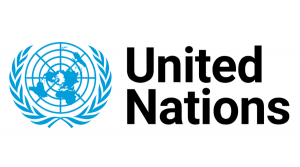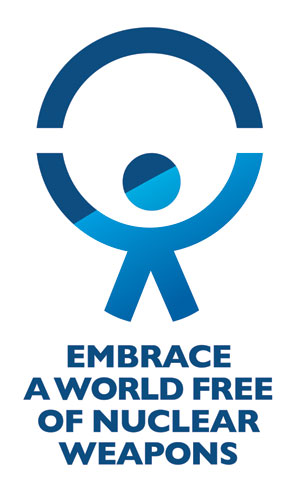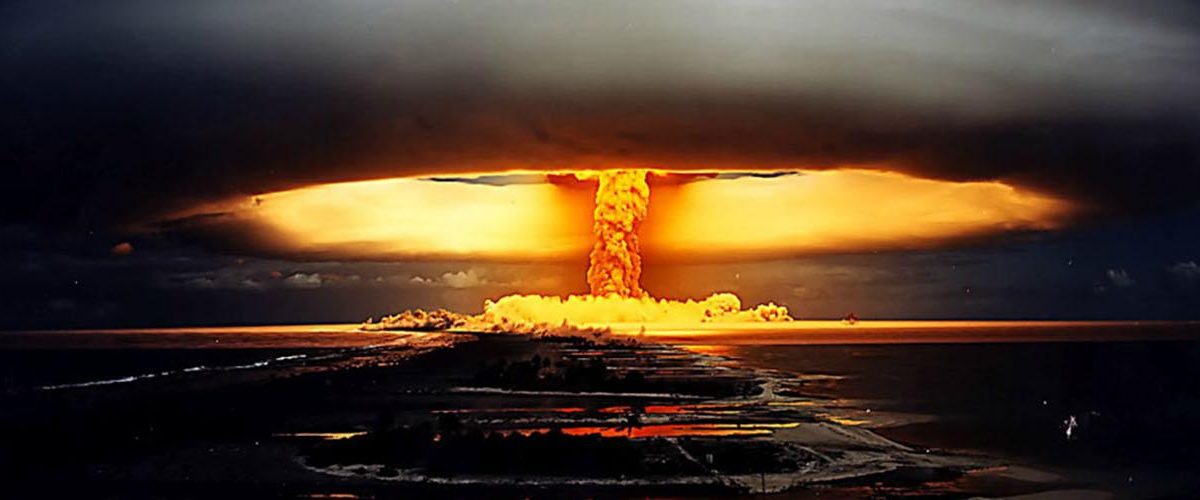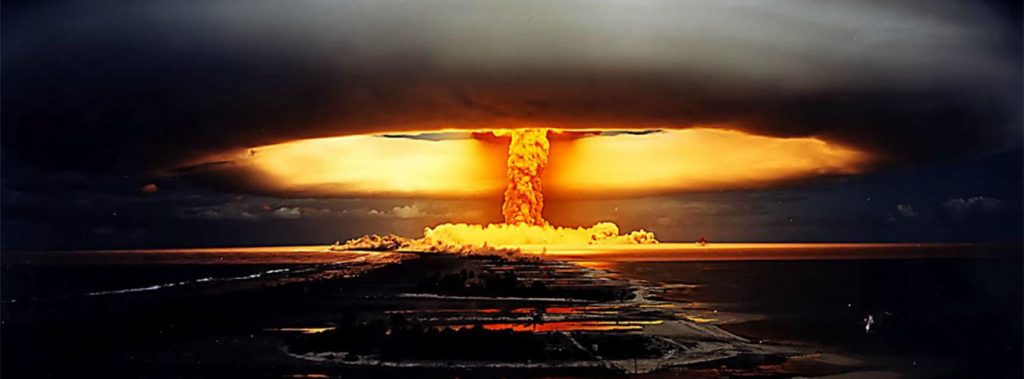
-
Since nuclear weapons testing began on 16 July 1945, over 2,000 have taken place. In the early days of nuclear testing little consideration was given to its devastating effects on human life, let alone the dangers of nuclear fallout from atmospheric tests. Hindsight and history have shown us the terrifying and tragic effects of nuclear weapons testing, especially when controlled conditions go awry, and in light of the far more powerful and destructive nuclear weapons that exist today.
On 2 December 2009, the 64th session of the United Nations General Assembly declared 29 August the International Day against Nuclear Tests by unanimously adopting resolution 64/35. The resolution calls for increasing awareness and education “about the effects of nuclear weapon test explosions or any other nuclear explosions and the need for their cessation as one of the means of achieving the goal of a nuclear-weapon-free world.” The resolution was initiated by the Republic of Kazakhstan, together with a large number of sponsors and cosponsors with a view to commemorating the closure of the Semipalatinsk Nuclear Test site on 29 August 1991.
2010 marked the inaugural commemoration of the International Day against Nuclear Tests. In each subsequent year, the day has been observed by coordinating various activities throughout the world, such as symposia, conferences, exhibits, competitions, publications, lectures, media broadcasts and other initiatives.
Since its establishment, many bilateral and multilateral governmental level developments as well as broad movements in civil society have helped to advance the cause of banning nuclear tests.
Moreover, “convinced that nuclear disarmament and the total elimination of nuclear weapons are the only absolute guarantee against the use or threat of nuclear weapons,” the General Assembly designated 26 September as the “International Day for the Total Elimination of Nuclear Weapons”, which is devoted to furthering the objective of the total elimination of nuclear weapons, through the mobilization of international efforts. The International Day for the Total Elimination of Nuclear Weapons was observed for the first time in September 2014. The International Day against Nuclear Tests, together with other events and actions, has fostered a global environment that strongly advocates for a world free of nuclear weapons.
The international instrument to put an end to all forms of nuclear testing is the 1996 Comprehensive Nuclear-Test-Ban Treaty (CTBT). Unfortunately, this has yet to enter into force.
As the Secretary-General recognized in his disarmament agenda “Securing our Common Future” launched on 24 May 2018, the norm against testing is an example of a measure that serves both disarmament and non-proliferation objectives. By constraining the development of advanced new types of nuclear weapons, the CTBT puts a brake on the arms race. It also serves as a powerful normative barrier against potential States that might seek to develop, manufacture and subsequently acquire nuclear weapons in violation of their non-proliferation commitments.
Every effort needs to be made to ensure the entry into force of the CTBT and to preserve its place in the international architecture. In this regard, the Secretary-General appeals to all remaining States whose ratifications are required for the CTBT to enter into force to commit to sign the Treaty at an early date if they have not already done so, and to accelerate the completion of their ratification processes.
It is the hope of the UN that one day all nuclear weapons will be eliminated. Until then, there is a need to observe International Day against Nuclear Tests as the world works towards promoting peace and security.
Background
On 2 December 2009, the 64th session of the United Nations General Assembly declared 29 August the International Day against Nuclear Tests through the unanimous adoption of its resolution 64/35. The Preamble of the resolution emphasizes that “every effort should be made to end nuclear tests in order to avert devastating and harmful effects on the lives and health of people” and that “the end of nuclear tests is one of the key means of achieving the goal of a nuclear-weapon-free world.”
The main mechanism for eradicating nuclear weapons testing is the Comprehensive Nuclear-Test-Ban Treaty (CTBT). It was adopted by the United Nations General Assembly on 10 September 1996. To date, 185 countries have signed the treaty and 170 have ratified it. For the Treaty to enter into Force, it must be ratified by those States with significant nuclear capabilities.
While the general consensus within the international community is that nuclear weapons tests pose life-threatening risks, there still exists to some degree a lingering suspicion of the possibility of clandestine nuclear weapons testing. There is also a concern that if nuclear weapons cannot be tested their reliability may be in jeopardy. However, over the years, advances in science and technology have exponentially boosted the capacity to monitor and verify compliance mechanisms and nuclear weapons proliferation detection. These activities and tracking tools have been initiated and developed by the Provisional Technical Secretariat of the CTBT Organization (CTBTO) Preparatory Commission. Despite the stalled entry-into-force, an increasingly robust public advocacy, including activities and events undertaken on the International Day against Nuclear Tests, is exerting pressure on the powers-that-be to move forward on the ratification of the treaty with a view towards the ultimate eradication of nuclear weapons testing.
The Preparatory Commission of the CTBTO and its 170 ratifying States vigorously continue to push for the Treaty’s entry into force. The CTBTO’s International Monitoring System, already encompassing nearly 90 per cent of States, provides confidence that no nuclear explosion will escape detection.
However, nothing can play as crucial a role in avoiding a nuclear war or nuclear terrorist threat as the total elimination of nuclear weapons. Bringing an irreversible end to nuclear explosions will prevent the further development of nuclear weapons.
Developments
Since the International Day against Nuclear Tests was first declared, there have been a number of significant developments, discussions and initiatives relevant to its goals and objectives as well as conferences convened to elaborate and advance these developments.
2021
- 22 January: the Treaty on the Prohibition of Nuclear Weapons (TPNW) formally entered into force.
- 3 February: the Treaty between the United States of America and the Russian Federation on Measures for the Further Reduction and Limitation of Strategic Offensive Arms (“New START Treaty”) was extended for an additional five-year period through February 4, 2026.
- 6 April: The talks among the JCPOA parties and the United States on the return to the full implementation of the JCPOA started in Vienna.
- 19-23 April: The first meeting of the Group of Governmental Experts on nuclear disarmament verification was held in Geneva.
- 16 June: the United States and the Russian Federation issued a Joint Presidential Statement on Strategic Stability at the outcome of the two Presidents’ summit in Geneva.
- 21 July: the Tenth Review Conference of the Parties to the Treaty on the Non-Proliferation of Nuclear Weapons was further postponed to a later date due to COVID-19 pandemic, as soon as the circumstances permit, but no later than February 2022.
- 29 July: the Fourth Conference of Nuclear-Weapon-Free Zones and Mongolia was further postponed by the General Assembly to later date due to COVID-19 pandemic.
2020
- 14 January: the E3 (France, Germany, the United Kingdom) referred the matter of phased withdrawal of nuclear-related commitments under the Joint Comprehensive Program of Action (JCPOA) by the Islamic Republic of Iran to the JCPOA’s Joint Commission, invoking the dispute resolution mechanism of the agreement.
- 27 March: The Tenth Review Conference of the Parties to the Treaty on the Non-Proliferation of Nuclear Weapons was postponed to a later date due to COVID-19 pandemic, as soon as the circumstances permit, but no later than April 2021.
- 13 April: The Fourth Conference of Nuclear-Weapon-Free Zones and Mongolia was postponed to a period in 2021 to be decided by the General Assembly at its seventy-fifth session.
- 2 July: the Islamic Republic of Iran referred the implementation issues with the E3 (France, Germany, the United Kingdom) to the JCPOA’s Joint Commission, invoking the dispute resolution mechanism of the agreement.
- 24 October: the 50th instrument of ratification for the Treaty on the Prohibition of Nuclear Weapons was deposited with the United Nations.
2019
- 1 February: The United States announced the suspension of its compliance to the Intermediate-Range Nuclear Forces Treaty (INF Treaty).
- 2 February: Russian Federation suspended the INF Treaty.
- 27-28 February: The Summit between the leaders of the Democratic People’s Republic of Korea and the United States of America was held in Hanoi, Viet Nam.
- 8-12 April: The third meeting of the Group of Governmental Experts to consider the role of verification in advancing nuclear disarmament was held in Geneva.
- 29 April – 10 May: The third session of the Preparatory Committee for the 2020 Nuclear Non-Proliferation Treaty Review Conference was held in New York.
- 8 May: The Islamic Republic of Iran announced its intention to no longer commit itself to some of the provisions of the Joint Comprehensive Program of Action (JCPOA).
- 30 June: The Summit between the leaders of the Democratic People’s Republic of Korea and the United States of America was held in the Korean Demilitarized Zone.
- 18-22 November: First Session of the Conference on the Establishment of a Middle East Zone Free of Nuclear Weapons and Other Weapons of Mass Destruction was held in New York.
- 12 December: General Assembly adopted a resolution 74/50 establishing the Group of Governmental Experts to further consider nuclear disarmament verification issues.
2018
- 5 February: The United States of America and the Russian Federation met the central limits on the Treaty on Measures for the Further Reduction and Limitation of Strategic Offensive Arms (“New START”).
- 15-16 February: The second informal Consultative Meeting of the FMCT High-level Expert Preparatory Group was held in New York.
- 23 April – 4 May: The second session of the Preparatory Committee for the 2020 Nuclear Non-Proliferation Treaty Review Conference was held in Geneva.
- 8 May: The United States announced its intention to withdraw from the JCPOA, an agreement on the Iranian nuclear programme.
- 14 -18 May: The first meeting of the Group of Governmental Experts to consider the role of verification in advancing nuclear disarmament was held in Geneva.
- 24 May: The UN Secretary-General launched his new disarmament agenda “Securing our Common Future” in Geneva.
- 28 May – June 8: The FMCT High-Level Expert Preparatory Group held its final meeting in Geneva.
- 12 June: The Summit between the leaders of the Democratic People’s Republic of Korea and the United States of America was held in Singapore.
- 1 July: Commemorated the 50th anniversary of the opening for signature of Treaty on the Non-Proliferation of Nuclear Weapons
- 7 July: Commemorated the first anniversary of the adoption of the Treaty on the Prohibition of Nuclear Weapons.
- 20 October: The United States declared its intention to withdraw from the Intermediate-Range Nuclear Forces Treaty (INF Treaty).
- 12 -16 November: The second meeting of the Group of Governmental Experts to consider the role of verification in advancing nuclear disarmament was held in Geneva.
The role of civil society
From the beginning of the nuclear age, civil society has played a prominent role in the effort to permanently halt testing of nuclear weapons. Physicists, seismologists, and other scientists; physicians and lawyers; women’s organizations; research institutes and disarmament NGOs; mayors and parliamentarians; “downwinders” exposed to radioactive contaminants resulting from atmospheric testing and the hibakusha, the survivors of the atomic bombings of Hiroshima and Nagasaki; and the wider public – all have been involved.
Some highlights from the decades of activities:
- In the 1950s, physicians and women’s groups raised awareness of the health effects of atmospheric testing, including the presence of radioisotopes in children’s teeth. This campaign helped lead to the Partial Test Ban Treaty, which prohibits testing under water, in the atmosphere and outer space – but not underground.
- In the 1980s, US and Russian scientists conducted joint experiments to demonstrate the feasibility of verifying a ban on underground testing.
- Also in the 1980s, US groups conducted mass protests at the Nevada Test Site in the United States, and a powerful anti-testing campaign, known as the Nevada-Semipalatinsk Movement, emerged in Kazakhstan, home to the principal Soviet test site at Semipalatinsk. Well-publicized actions and Campaigns were also directed at the French test site at Mururoa in the Pacific in the 1980s and again in the 1990s.
- Beginning in 1985, NGOs lobbied in the Nuclear Non-Proliferation Treaty (NPT) review process for a commitment to achieve a Comprehensive Nuclear-Test-Ban Treaty (CTBT). It was first adopted in connection with the 1995 decision to extend the treaty and reaffirmed at the 2000 and 2010 review conferences. Especially since the end of the Cold War, civil society has vigorously advocated, in growing numbers, for NPT review conferences to commit to steps leading to the elimination of nuclear weapons, including the CTBT, and the 2000 and 2010 conferences in fact have done so.
- In the 1990s, NGOs and parliamentarians sparked the convening of a 1991 conference on amending the Partial Test Ban Treaty to make it comprehensive, a process which helped to lay the groundwork for CTBT negotiations.
- Non-governmental researchers developed understanding of verification techniques.
- Non-governmental research and advocacy groups monitored the negotiations that led to the 1996 adoption of the CTBT.
- NGOs campaigned to persuade their governments to negotiate, then ratify, the CTBT. Some also critiqued experimental and supercomputing facilities intended to replace nuclear explosive testing.
Over the decades, and especially in recent years, civil society efforts in support of a comprehensive ban on nuclear testing for the most part have been connected to the larger enterprise of achieving the total elimination of nuclear weapons. To help bring the CTBT into force, NGOs, civil society and members of the public, especially in those countries that must ratify the Treaty for it to enter into force, can urge their – and other – governments and parliaments to sign and ratify the treaty. They can also urge their governments to endorse the Secretary-General’s Five Point Proposal for Nuclear Disarmament, which includes bringing the CTBT into force and consideration of negotiating a nuclear weapons convention, backed by a strong system of verification, as has long been proposed at the United Nations.
Many entities, such as research institutes, academic institutions and NGOs, are engaged in disarmament-related work, including in relation to the CTBT.

“The nuclear menace is once again on the rise. A complete ban on nuclear testing is an essential step in preventing the qualitative and quantitative improvement of nuclear weapons and in achieving nuclear disarmament.”
António Guterres

Please click here to Read More…





